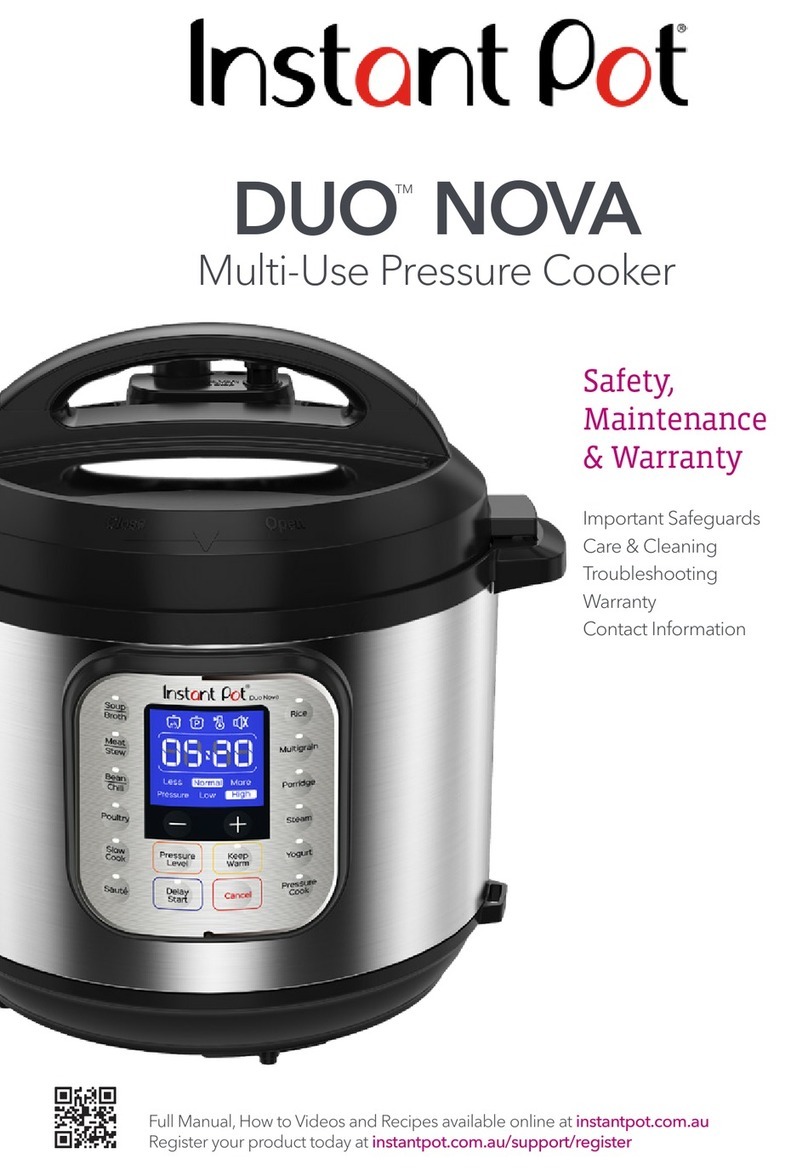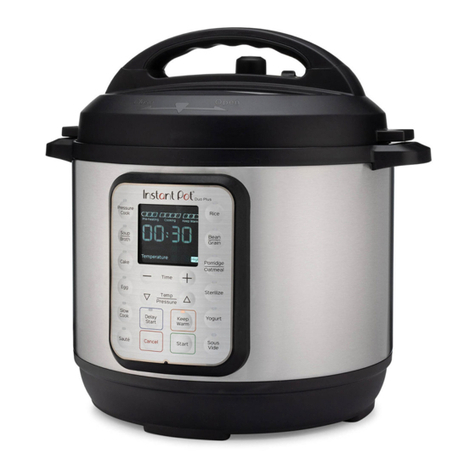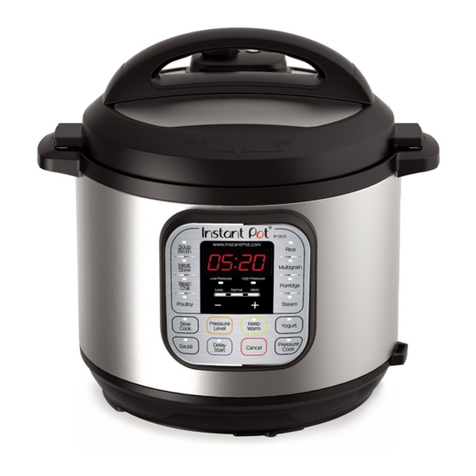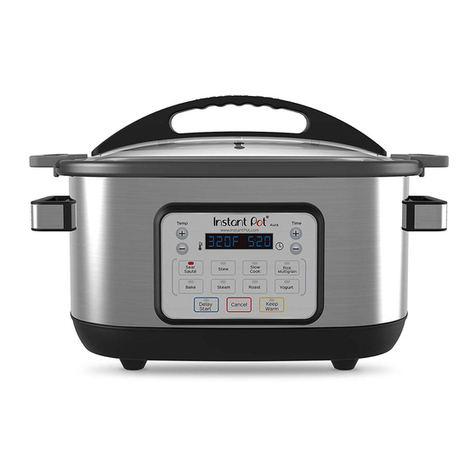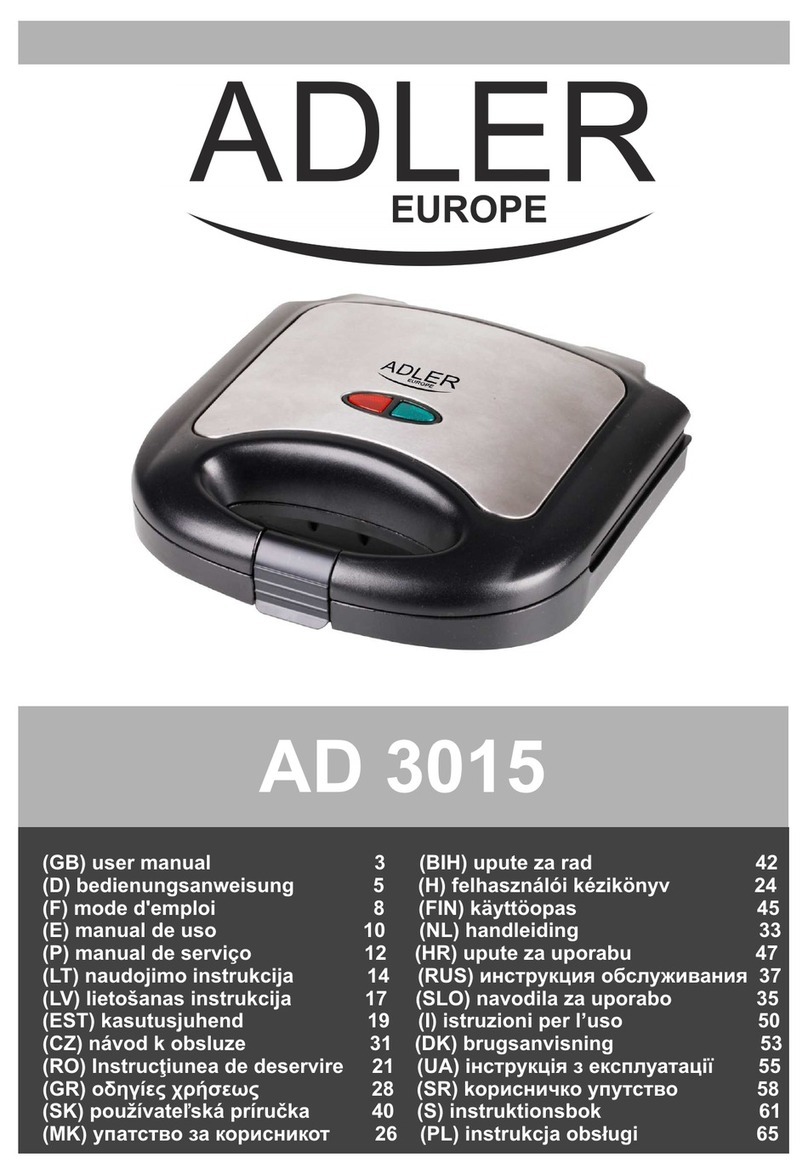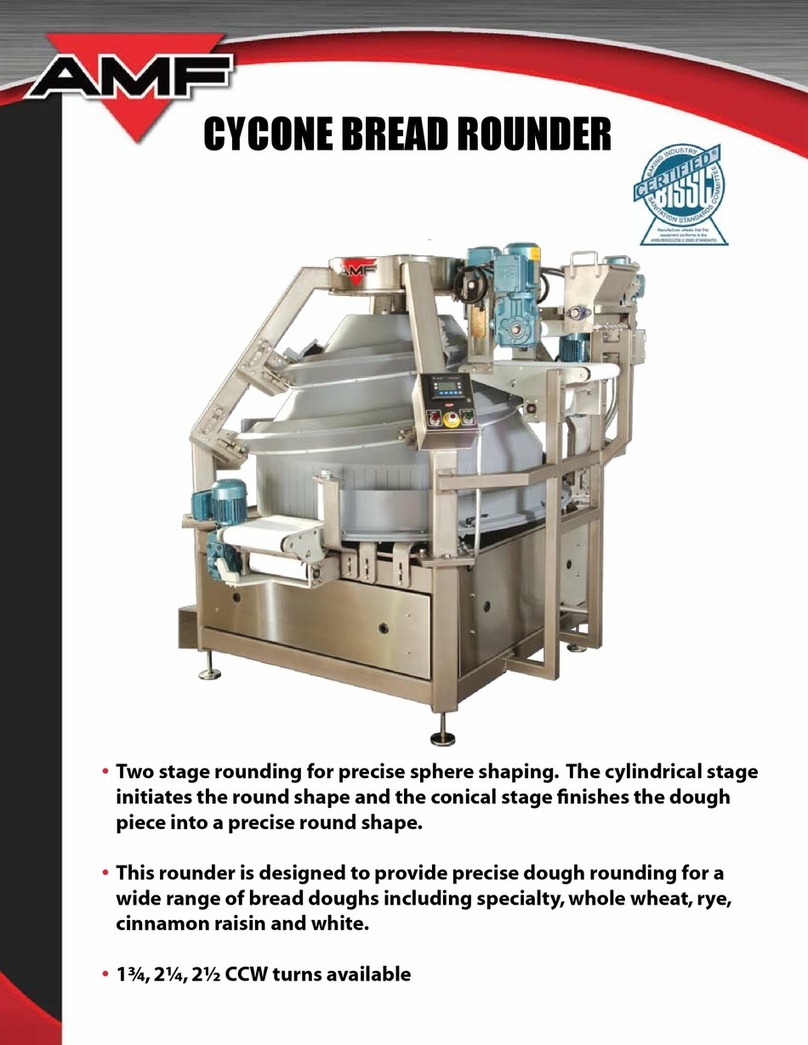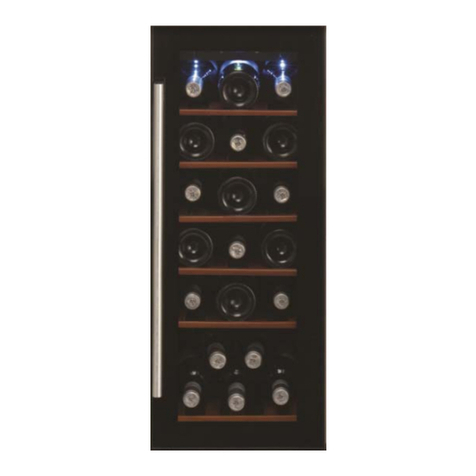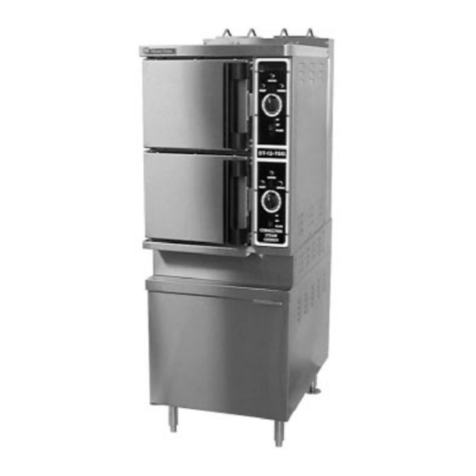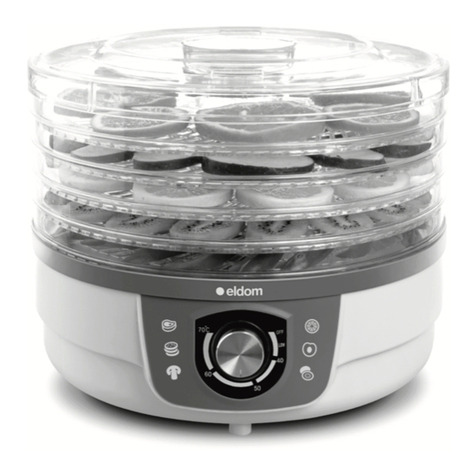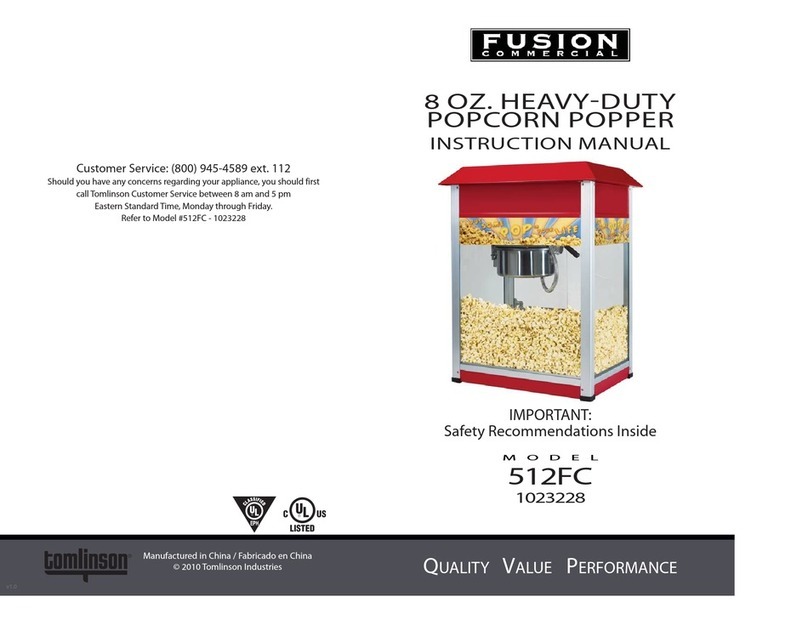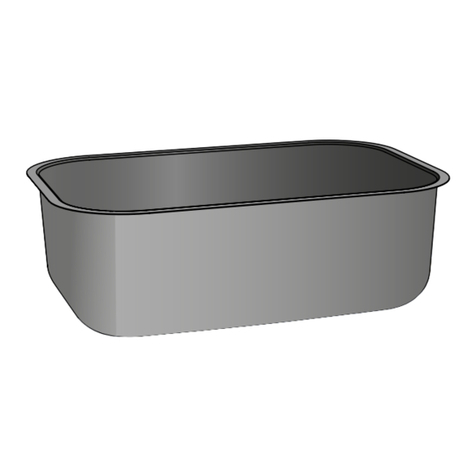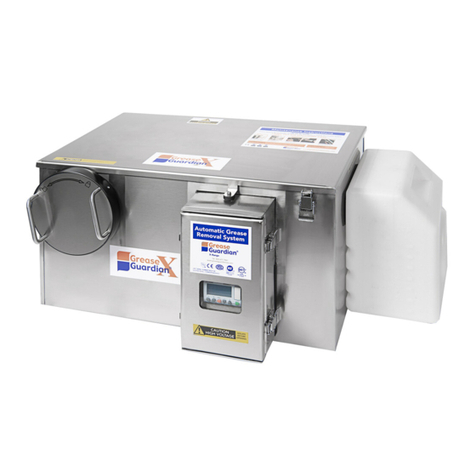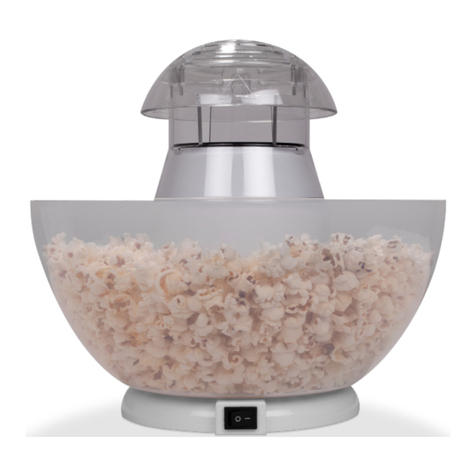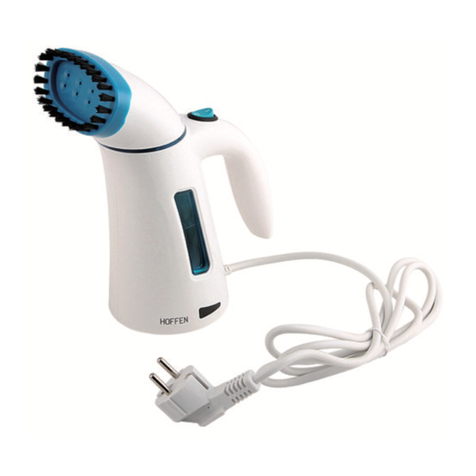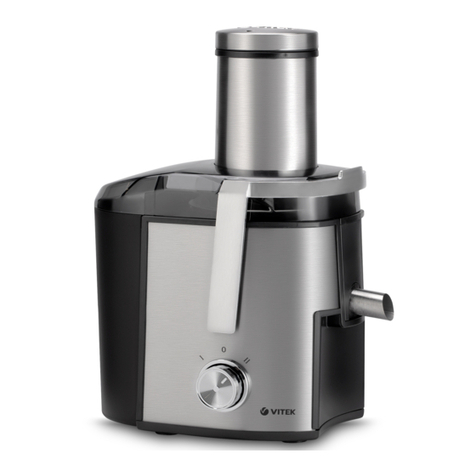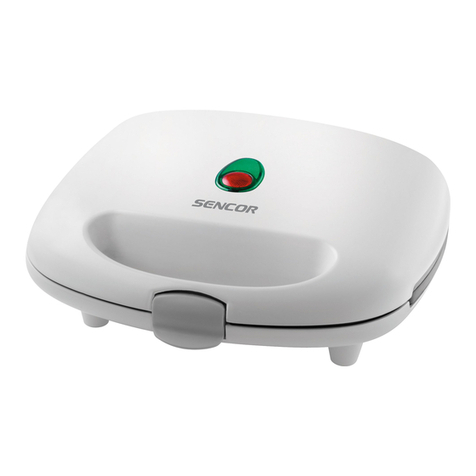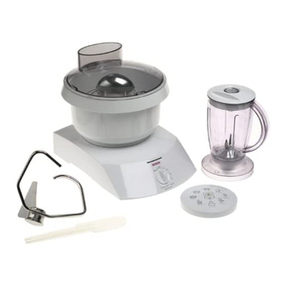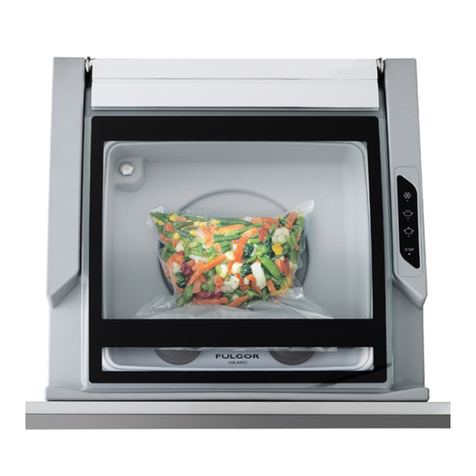InstantPot Max Series User manual

User Manual
Max
Series
Instant Pot® Free Recipe App
• 500+ Free Recipes
• New User Tips
• Getting Started Videos

Thank you for selecting an Instant Pot®smartcooker! Our vision for
Instant Pot®is to provide you with the right tools to enhance your food
preparation experience. Our smartcookers are designed to save you
time, replace a number of appliances, and prepare healthy and tasty
meals in a convenient and dependable way.
We partner with chefs, authors, and bloggers to compile a collection of
recipes that we hope you enjoy! As well, for over 500+ additional recipes,
videos and more, download the Instant Pot®Recipe App.
Happy Instant Pot®Cooking!
Cooking!
Welcome to the World of
Robert J. Wang
Founder, CEO

Welcome
Important Safeguards 1 - 3
Product Specifications 3
What’s Included 4
Lid Structure 5
Cooker Base Structure 6
Getting Started 7 - 10
Control Panel 11 - 12
Venting Methods 13
Initial Test Run (15 psi Water Test) 14 - 15
System Settings & Time 16
Operation Field 17 - 18
Delay
Keep Warm
Usage Tips 19
Cooking Tips 20
Smart Programs & Advanced Features
Pressure Cook 21
NutriBoost™ 22
Canning 23 - 26
Sauté 27
Slow Cook 28
Sous Vide 29 - 30
Cooking Guidelines 31
Yogurt 32
Care & Cleaning 33
Troubleshooting 34 - 35
Warranty 36 - 37
Index 38 - 39
Read the manual carefully and retain for future use.
1
Table of Contents

2
When using electrical appliances, basic safety precautions should
always be followed:
1. READ ALL INSTRUCTIONS.
2. Do not touch hot surfaces. Only use side handles for carrying or moving.
3. Do not place the appliance on or in close proximity to a hot gas or electric
burner, or a heated oven; heat from an external source will damage the
appliance.
4. Do not use near water or flame. Please keep out of direct sunlight.
5. Extreme caution must be used when moving the appliance
containing hot liquids. Do not move the appliance when it is under
pressure.
6. Do not use appliance for anything other than intended use.
7. For household use only. Do not use outdoors. Not for commercial use.
8. This appliance cooks under pressure. Improper use may result in scalding
injury. Make certain the appliance is properly closed before operating.
Refer to the “Getting Started” section.
9. Do not fill the appliance over ⅔ full. When cooking foods that expand
during cooking such as rice or dried vegetables, do not fill the appliance
over ½ full. Over filling may cause a risk of clogging the vent pipe and
developing excess pressure. Refer to the “Pressure Cooking” section.
10. Before each use, check the steam release valve/handle, steam release
pipe, anti-block shield and float valve for clogging. Refer to the “Getting
Started” section.
11. Do not open the appliance until the appliance has depressurized and all
internal pressure has been released. If the float valve is still up and/or the
lid is difficult to open, this indicates that the appliance is still pressurized –
do not force it open. Any pressure in the appliance can be hazardous.
Refer to the “Getting Started” section for instructions to safely remove lid.
12. Do not use this appliance for deep frying or pressure frying with oil.
13. Do not lean over or place your hands or face over the steam release
valve/handle or float valve when the appliance is in operation or has
residual pressure. Do not touch the metal portion of the lid when the
appliance is in operation; this could result in injury.
Read and save these safety guidelines.
Failure to adhere to these safety guidelines may result
in serious injury.
WARNING
1
IMPORTANT SAFEGUARDS
CAUTION
1

14. Do not cover or obstruct the steam release valve/handle and float valve
with cloth or other objects. Obstructing the steam release valve/handle and
float valve can create a safety issue and may cause injury.
15. Turn the appliance off if steam escapes from the steam release
valve/handle or float valve in a steady stream for longer than 3 minutes.
There may be residual pressure in the appliance. Allow the appliance to
depressurize naturally or release all excess pressure before opening. Refer
to the “Troubleshooting” section.
16. Turn the appliance off if steam escapes from the sides of the lid and
ensure sealing ring is properly installed. Refer to the “Getting Started”
section.
17. To protect against electrical shock, do not immerse the power
cord, plugs, or appliance in water or other liquid.
18. A short power supply cord (35 in / 0.9 m) is provided to reduce the hazards
resulting from it being grabbed by children, becoming entangled in, or
tripping over a longer cord.
19. Always attach plug to appliance first, then plug cord into power source. To
disconnect, turn appliance OFF, then remove plug from power source.
20. Unplug from outlet when not in use and before cleaning. Allow to cool
before putting on or taking off parts, and before cleaning or storage.
21. Do not operate any appliance with a damaged cord or plug, or after the
appliance malfunctions or has been damaged in any manner. Contact the
Customer Care Team.
22. Do not let power cord hang over edge of table or counter, or touch hot
surfaces.
23. Intended for countertop use only. Keep the appliance on a stable,
heat-resistant platform. Do not place on anything that may block the vents
on the bottom of the appliance. Do not place on hot stove.
24. Spilled food can cause serious burns. Keep appliance and cord
away from children. Never drape cord over edge of counter, never use
outlet below counter, and never use with an extension cord.
25. When cooking meat with skin (e.g. sausage with casing), the skin can swell
when heated. Do not pierce the skin as long as it is swollen; this could
result in scalding injury.
3
Read and save these safety guidelines.
Failure to adhere to these safety guidelines may
result in serious injury.
WARNING
IMPORTANT SAFEGUARDS
CAUTION
2

26. When pressure cooking food with a doughy or thick texture, or a high fat/oil
content, contents may splatter when opening the lid. Please follow recipe
instructions for pressure release method. Once steam is fully released,
gently shake the appliance with extreme caution and then if necessary,
release the steam again before removing the lid. Refer to the “Venting
Methods” section.
27. Before inserting the inner pot into the appliance, wipe the outer surface of
the inner pot and cooking element to confirm they are dry and free of food
debris. Refer to the “Care & Cleaning” section.
28. Do not attempt to repair, replace, or modify components of the appliance,
as this may cause electric shock, fire or injury, and will void the warranty.
29. Do not tamper with any of the safety mechanisms.
30. Do not use appliance in electrical systems other than 120V/60Hz for North
America. Do not use with power converters or adapters.
31. Close supervision is necessary when the appliance is used near children.
32. This appliance should not be used by children; by individuals whose
physical, sensory or mental abilities may prevent safe use of the appliance;
or by individuals with limited knowledge of how to use the appliance. Close
supervision is needed when using this appliance near these individuals.
33. To reduce the risk of electric shock and pressure leakage, cook only in a
removable container authorized by the manufacturer.
34. The use of accessory attachments not recommended by the appliance
manufacturer may cause injuries.
SAVE THESE INSTRUCTIONS.
13.25 lb
6.01 kg
120V ~ 60Hz1100 W 6 QuartModel: Max in: 13.8L x 13.8W x 13H
cm: 35L x 35W x 33H
4
Read and save these safety guidelines.
Failure to adhere to these safety guidelines may result
in serious injury.
WARNING
IMPORTANT SAFEGUARDS
Product Specifications
3

Before using your new Instant Pot®Max, please remove all items from the box and read over all
instructions carefully. Pay special attention to Important Safeguards and operation instructions,
in order to avoid personal injury and/or property damage.
Please see the “Unboxing” tutorial video at: www.InstantPot.com/faq/instant-pot-help-video
Cooker BaseLid Inner Pot
Silicone
Mini Mitts
Rice
Measuring
Cup
Steam Rack
with Handles
Soup Spoon
& Rice Paddle
4
ManualQuick Start Guide Recipe Book Cooking Time Tables
Silicone Sealing Ring
(currently installed within lid) Condensation Collector Detachable
Power Cord
What’s Included

When attached to the base, the lid becomes powered, enabling an automated venting process
to occur during and after cooking. This technology also enables the thermal sensor to transmit
temperature readings to the cooker base for precision cooking.
Lid Position
Marker
Lid Handle
Lid Fin
Steam Release Cover
Steam Release Valve
Steam Release Pipe
Float Valve
Locking Pin
Thermal
Sensor
Float Valve
Silicone Cap
Anti-Block
Shield
Silicone
Sealing Ring
Steam Release
Assembly
Sealing Ring
Rack
5
Lid Structure

Cooker
Handle
LCD Touch
Screen
Central Dial
Heating
Element
Stainless Steel
Outer Pot
Base
Power Socket
Cooker
Handle
Condensation
Drain Hole
6
INSTANT TIP: The Cooker Handles are also a Lid Holder
The lid has been designed with lid fins that fit perfectly
inside the cooker handles on the left and right sides of
the cooker base.
Cooker Base

To Open:
To Close:
To Open: Remove the lid by gripping the handle
and turning the lid counter-clockwise until the
symbol on the lid is aligned to the arrow
symbols on the cooker base. Lift the lid up from
the cooker base.
To Close: Align the arrow symbol on the lid to the
unlock symbol on the rim of the cooker base, then
turn the lid clockwise until the lid fins line up over
the cooker base handles.
3Open & Close the Lid
Remove all packaging materials and accessories
from in and around the pressure cooker, and
verify that all parts are accounted for.
Read all safeguards and instructions. Remove all
warning cards and hanging tags after reading.
Do not remove safety warning sticker placed on
top of the lid and back of cooker base.
Safety Warning
Sticker
Rating Label
Condensation
Collector
The condensation collector has grooves on
either side that fit over the condensation
collector tabs on the cooker base. Align the
condensation collector grooves over the tabs
and push the condensation collector into place.
The condensation collector captures any
moisture that develops during cooking and
should be cleaned after each use.
2Install the Condensation Collector
1Read Safeguards & Remove Tags
7
Getting Started

The steam release valve and cover must be installed
during use.
Remove the Steam Release Cover: Turn the steam
release cover counter-clockwise until it can be pulled off
from the lid.
Remove the Steam Release Valve: Pull the steam
release valve up and off the steam release pipe.
Install the Steam Release Valve: Place the steam
release valve onto the steam release pipe and press
down.
Install the Steam Release Cover: Place the steam
release cover over the steam release valve and turn the
steam release cover clockwise until it locks securely in
place.
Note: The steam release valve will pop into place, but will fit
loosely when it is seated properly in place—this is required for
proper function. You should feel some resistance as you remove
or install the steam release valve. This part should be inspected
and cleaned frequently, especially after cooking the
foamy foods.
4Remove & Install the
Steam Release Assembly
To remove: Grip the lid like a steering wheel. Using your
thumbs for leverage, press firmly against the side of the
anti-block shield (pressing towards the side of the lid and
up) until it pops off. The anti-block shield will snap off of
the prongs underneath.
To install: Press the anti-block shield over the prongs
and press down until it snaps into place.
Note: The anti-block shield prevents food particles from clogging
the steam release pipe. These fine particles can become
trapped underneath the shield and prevent pressure regulation.
The anti-block shield should be removed for regular cleaning.
5Remove & Install the Anti-Block Shield
The anti-block shield must be installed during use.
8
Anti-Block
Shield
Steam
Release
Cover
Steam
Release
Valve
Steam
Relase
Pipe
Getting Started

Remove the inner pot from the cooker base —
always ensure that the inner pot’s exterior is
clean and dry, and that the heating element is
free of food debris.
Always check that the element is clean and in
good condition before use.
6Remove & Clean the Inner Pot
Check that the sealing ring is sitting snuggly
behind the sealing ring rack. When installed, the
sealing ring creates an airtight seal between the
lid and the cooker base. The sealing ring must
always be in place on the sealing ring rack
during use.
To remove: Pull the sealing ring out from behind
the sealing ring rack and set it aside.
To install: Place the sealing ring over the sealing
ring rack, and use your thumbs to press it
into place.
Note: Inspect the sealing ring rack. It should be centered
in the lid and the same height all the way around. Do not
attempt to repair a deformed ring rack. Always check for
cracks, wear, or deformations in your sealing ring prior to
cooking. To prolong the life of your sealing ring, do not
remove it from the lid unless necessary for cleaning.
7Check the Sealing Ring &
Sealing Ring Rack
Secure the power cord into the base power socket
before connecting to a 120V power source. The
pressure cooker will remain in Standby mode
when plugged in but not in operation.
8Secure the Power Cord
Heating
Element
Sealing Ring
Sealing
Ring Rack
9
Getting Started

Depressurized
The float valve and silicone cap are essential to
pressure cooking, as they seal in the
pressurized steam.
The float valve has 2 positions:
Down: cooker is depressurized
Up: cooker is pressurized
While the float valve is up, the
contents of the cooker are pressurized. Do not
attempt to remove the lid. Refer to “Venting
Methods” section in this manual for information
on releasing pressure.
To test: Hold the lid by the handle and reach
underneath to test the float valve’s movement.
It will have a ¼ inch (½ cm) range of
up-and-down motion.
To remove: Place one finger on the flat top of
the float valve, turn over the lid and detach the
silicone cap from the bottom side of the float
valve. Do not discard the silicone cap!
Once disconnected, the float valve can be
removed from the top of the lid.
To install: Drop the float valve into the float
valve hole on top of the lid. Then, place one
finger on the flat top of the float valve, turn the
lid over, and press the silicone cap back into
place on the bottom of the float valve.
Note: Regular removal and cleaning of the float valve
and surrounding area is essential to ensure proper
function of your Instant Pot®.
9Remove & Re-Install the
Float Valve
10
Getting Started
CAUTION
Float
Valve
Pressurized

11
Pressure
Cook
Sear
Rice
Sous
Vide
Slow
Cook
Soup /
Broth
Canning
Yogurt
Cancel Start
Max
ft
Hour Minute
ft
m
Pressure Temperature
Keep Warm Venting
Delay
Pre-Heat Cook Keep Warm
1
2
3
4
8
7
6
5
Control Panel

12
1Pressure Indicator
The icon will be lit when the pressure cooker is still under pressure,
indicating that the lid is locked and cannot be removed
2System Settings
• System Settings Lock / Unlock
• Temperature Display: Fahrenheit (°F) or Celsius (°C)
• Altitude Display: feet (ft) or meters (m)
• Sound (ON / OFF)
3Smart Programs
• Pressure Cook
• Sauté
• Rice
• Sous Vide
• Slow Cook
• Soup / Broth
• Canning
• Yogurt
• Manual Keep Warm
4Control Keys
• Cancel
• Start
5Cooking Progress Indicator
Real-time cooking temperature display & cooking progress:
• Pre-Heat Status
• Cook Status
• Keep Warm Status
6Local Time & Cooking Display
• Standby Mode: 12-hour AM / PM clock
• In-Program Time: hour & minute
7Smart Program Settings
• Pressure (Low / High / Max)
• Temperature (Low / High / Custom)
• Keep Warm (Automatic / Manual)
• Venting Options (Natural Release, Pulse Release & Quick Release)
8Central Dial
Turn the central dial to adjust the time, temperature & altitude
ft m

Natural Release (NR)
This setting allows the pressure cooker to dissipate heat and
pressure release naturally over time. This method must be used
when cooking food that is thick or starchy, such as soups, stews
or chilies, as well as food that expands, such as beans and grains.
It is also commonly used when cooking clear broths, as it allows
for the liquid to cool while undisturbed, resulting in crystal clarity.
Note: Depressurization time will vary, based upon the volume of food /
liquid and a variety of other factors.
Pulse Release (PR)
This method of venting releases incremental bursts of steam
at precisely programmed intervals.
Quick Release (QR)
A short warning burst will be released, followed by a continuous
stream of steam. This method is most commonly used when
cooking vegetables, fish, eggs or other foods that may overcook
during NR or PR.
Your pressure cooker has an automated venting system for post-cooking pressure release,
which can be activated on pressure cooking Smart Programs when desired. The default
venting method is Natural Release (NR). To stop or pause once a venting method has
begun, touch the Venting field and the pressure cooker will automatically return to NR.
There are 3 methods to release pressure:
13
Do not lean over the
steam release cover. Do not place
unprotected skin
over the steam
release cover.
Do not cover the
steam release cover. When the Pressure
Indicator is lit, do not
open the lid.
0
WARNING
Venting Methods

14
Cancel Start
Max
ft
Hour Minute
ft
m
Pressure Temperature
Keep Warm Venting
Delay
Pre-Heat Cook Keep Warm
5
Touch Minute to adjust
the cook time.
Cancel Start
Max
ft
Hour Minute
ft
m
Pressure Temperature
Keep Warm Venting
Delay
Pre-Heat Cook Keep Warm
4
Touch Pressure Cook.
6
Turn the central dial to
adjust the cook time to
15 minutes 00:15.
3
Turn the lid clockwise
to close until a
jingle sounds.
2
Line up the unlock
arrow on the cooker
base with the arrow on
the lid.
x3
PC MAX 2/3
1/2
1
Add 3 cups (750 mL) of
water to the inner pot.
8
Touch Venting to toggle
between auto-venting
options NR, PR, and QR.
Select QR.
7
Touch Pressure to
toggle between Low,
High, and Max.
Select Max.
Cancel Start
Max
ft
Hour Minute
ft
m
Pressure Temperature
Keep Warm Venting
Delay
Pre-Heat Cook Keep Warm
9
Touch Start to begin
cooking. 3 beeps will
sound.
3
Initial Test Run (15 psi Water Test)

15
The float valve will drop
to indicate the pressure
has been fully released.
11 12
A short warning burst
will be released, followed
by a continuous stream
of steam.
10
When the Smart Program
has completed, 10 beeps
will sound.
ft
Hour Minute
ft
m
Pressure Temperature
Keep Warm Venting
Pre-Heat Cook Keep Warm
14
Turn the lid counter
clockwise to open until a
jingle sounds.
Once the Pressure
Indicator has turned
OFF you may open
the lid.
13
Initial Test Run (15 psi Water Test)

Adjust the System Settings:
The system settings will remain on your display so you always know which ones are in effect.
To change your system settings:
1. Touch Cancel to ensure the cooker is in standby mode.
2. Touch the System Settings icon (when in standby mode). Note that the padlock symbol
disappears. This means that your system settings are “unlocked”, and you can now alter
them as you wish.
Adjust Temperature Display:
Touch the Temperature Display icon to toggle between Celsius (°C) or Fahrenheit (°F). The
symbol that is flashing indicates your current selection.
Adjust Altitude Display:
Set your present altitude on the smartcooker before setting the cook time. The smartcooker
will adjust the cook time automatically based on your altitude settings.
1. Touch the icon to toggle between feet (ft) or meters (m). The symbol that is
flashing indicates your current selection.
2. Once the unit has been selected, turn the central dial to adjust the altitude.
Turn Sound ON & OFF:
Touch the Sound icon to toggle the Sound ON or OFF. Error code alerts cannot be silenced.
Set Local Time:
1. Touch the ‘Hour’ field, then turn the central dial to adjust.
2. Next, touch the ‘Minute’ field and turn the central dial to adjust.
If you scroll past 12:00, the AM / PM will switch automatically.
Lock the System Settings:
Touch the System Settings icon to lock in your selections. Note that the padlock symbol will
reappear to indicate that your selections are "locked in". If you do not lock your settings, no
changes will be saved. If you do not wish to save your settings, touch the Cancel key (or wait
10 seconds and the settings will return to the previous selection).
Factory Reset (Specific Smart Program):
When the pressure cooker is in standby mode, touch the Smart Program to be reset. When
the Smart Program starts flashing, touch and hold the Cancel key for 2-3 seconds until a
beep sounds.
Factory Reset (All Settings):
When the pressure cooker is in standby mode, touch and hold the Cancel key for 2-3
seconds until a beep sounds.
ft
16
System Settings & Time

Cancel Start
Max
ft
Hour Minute
ft
m
Pressure Temperature
Keep Warm Venting
Delay
Pre-Heat Cook Keep Warm
Cancel Start
Max
ft
Hour Minute
ft
m
Pressure Temperature
Keep Warm Venting
Delay
Pre-Heat Cook Keep Warm
Cancel Start
Max
ft
Hour Minute
ft
m
Pressure Temperature
Keep Warm Venting
Delay
Pre-Heat Cook Keep Warm
To set a Delay cook timer, touch the
Delay field.
Once the ‘Hour’ field or ‘Minute’ field is flashing,
the pressure cooker is ready to be customized.
Note: The delay start time will be based upon the clock.
Touch the ‘Hour’ field and turn the central dial to
select the desired hour value.
Touch the ‘Minute’ field and turn the central dial
to select the desired minute value.
To adjust AM/PM, turn the central dial until the
display rolls past 12:00.
1
2
3
Touch Start to begin the Delay cooking process.
When the Delay function is active, a second
hand will tick around the clock icon.
4
Start
17
The Delay setting can be applied to all Smart Programs with the exception of Sauté, Manual
Keep Warm, and Yogurt. The Delay setting is not recommended to be used in conjunction with
the auto-venting features when cooking thick or foamy foods. The liquid may cause spattering
during the cooking process.
Operational Field - Delay
Other manuals for Max Series
3
Table of contents
Other InstantPot Kitchen Appliance manuals
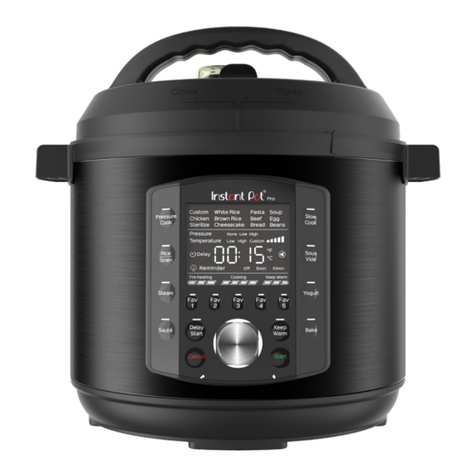
InstantPot
InstantPot Pro 60 User manual
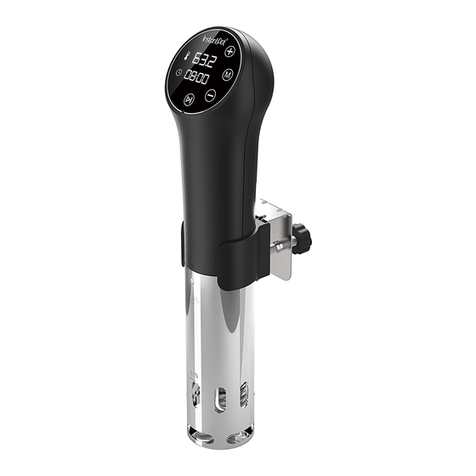
InstantPot
InstantPot Accu SV800 User manual
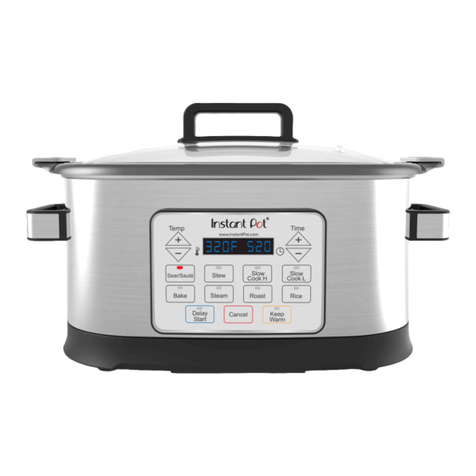
InstantPot
InstantPot duo plus User manual

InstantPot
InstantPot IP-LUX60 User manual
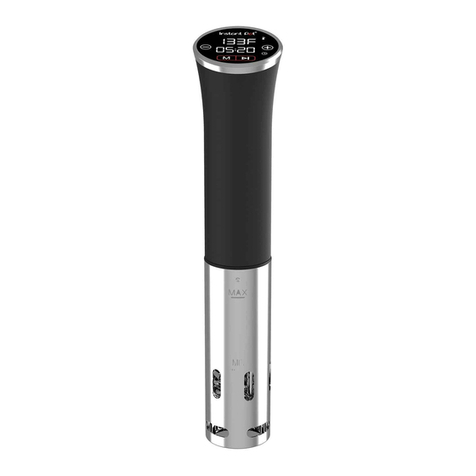
InstantPot
InstantPot Accu Slim User manual
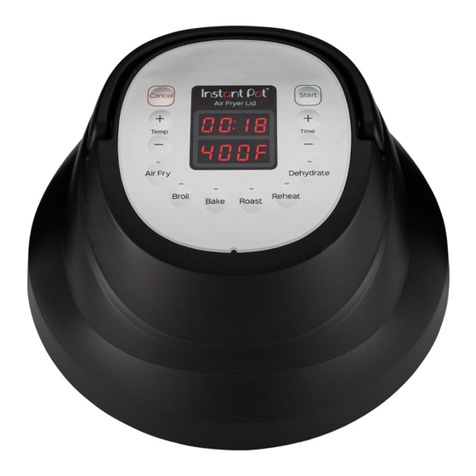
InstantPot
InstantPot AIR FRYER LID 6 User manual

InstantPot
InstantPot DUO CRISP+ AIR FRYER User manual

InstantPot
InstantPot Max Series User manual
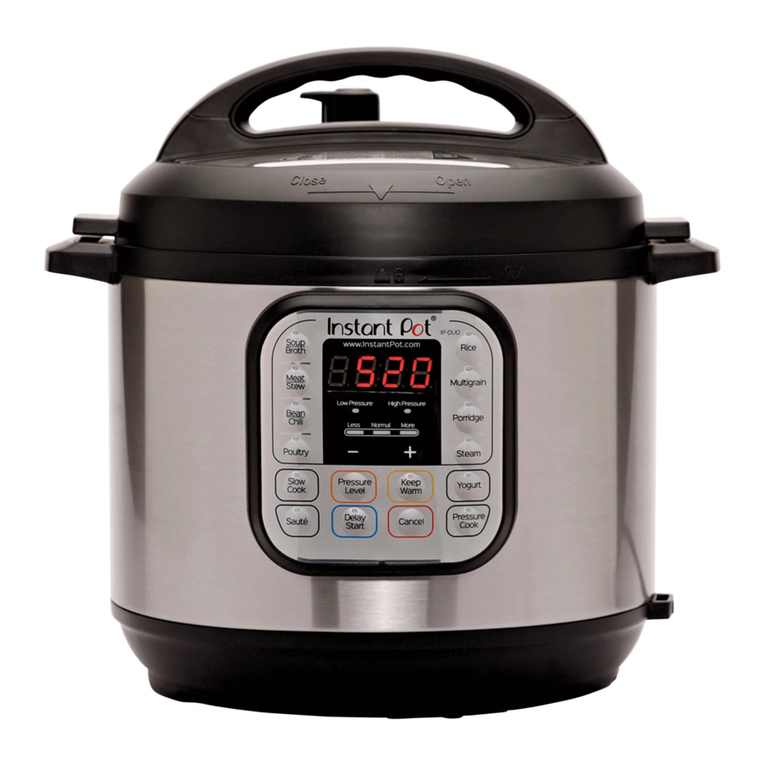
InstantPot
InstantPot IP-DUO60 User manual

InstantPot
InstantPot DUO CRISP + AIR FRYER Guide
